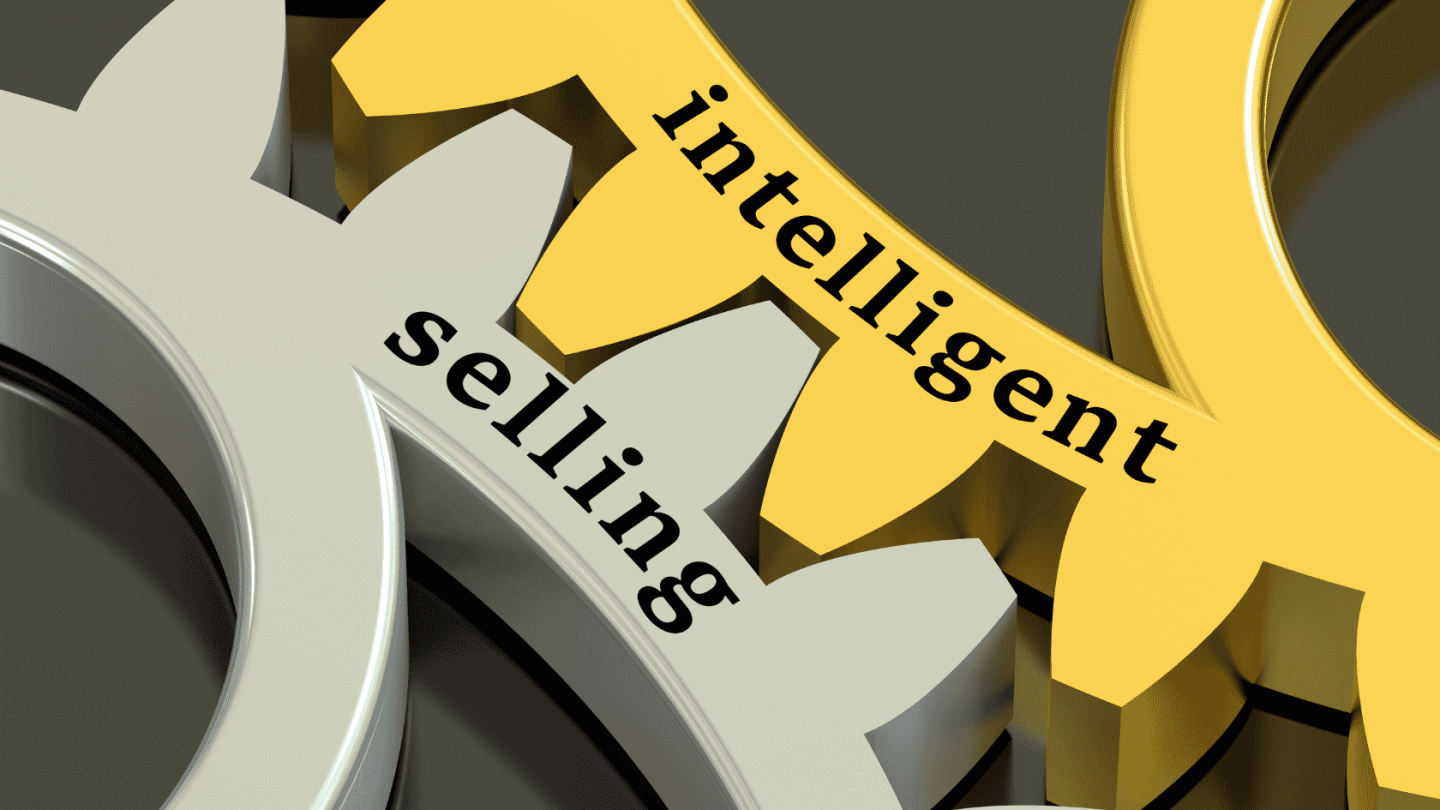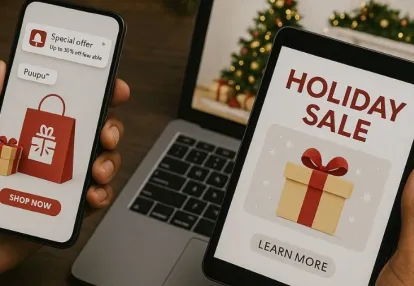
Our spy tools monitor millions of push notification ads from over 90+ countries and thousands of publishers.
Get StartedPush notifications, an innovative communication channel, have become a pivotal element in e-commerce advertising. These brief messages appear on users' devices or web browsers, capturing attention with immediacy that other digital advertising forms often lack. Unlike the pop advertising of old, which many found disruptive, push notifications present a more accepted and engaging way to interact with consumers.
Where e-commerce is concerned, these notifications are not merely alerts but powerful tools for driving sales and enhancing customer experience. They enable online stores to deliver timely offers, product updates, and personalized messages directly to their audience, thereby fostering a seamless shopping journey.
In this guide, you'll delve into the intricacies of push notifications within the e-commerce landscape. You will uncover effective strategies, explore versatile tools, and learn best practices—all aimed at refining your push notification advertising approach. The goal is clear: to harness this technology in ways that escalate sales and cultivate lasting customer relationships for your online store.
Push notifications are direct messages sent from e-commerce stores to their customers. They can be received on devices or web browsers and are used to provide timely updates, offers, and reminders. Push notifications play a crucial role in influencing buying decisions and improving the overall shopping experience.
Here are two popular e-commerce platforms and how you can integrate push notifications with them:
To measure the effectiveness of your push notification campaigns, it's important to track key metrics using tools like Google Tag Manager and UTM parameters. Here are some metrics you should pay attention to:
By analyzing these metrics, you can gain valuable insights into what's working and what needs improvement in your push notification strategy.
Let's look at an example of how push notifications can drive results for an e-commerce store:
Imagine an online clothing store that has recently launched a new collection. They decide to send out a push notification to their subscribers, offering an exclusive discount on these new arrivals for a limited time.
As a result of this targeted promotion, the store sees a surge in website traffic and a significant increase in sales of the new collection. In fact, within just a few hours of sending out the push notification, they generate $X in revenue.
This success story highlights the power of using push notifications to create urgency, personalize offers, and drive immediate action from customers.
Push notifications offer several advantages for e-commerce businesses:
By leveraging the power of push notifications on platforms like Shopify and WordPress, e-commerce businesses can effectively drive sales and build stronger relationships with their customers.
E-commerce marketers can use strategic differentiation to engage different segments of their audience. By personalizing push notifications based on user behavior, purchase history, and browsing data, businesses can send messages that resonate with various customer groups. Here's how to use segmentation for push notifications:
Group your users based on their:
Create personalized messages that appeal to the interests and needs of each segment.
Brightech, a popular home decor brand known for its stylish lighting solutions, provides an excellent example of how personalization can work. They send customized push notifications to customers based on their past interactions and preferences, which has led to significant increases in both engagement and sales.
To make push notifications even more effective, A/B testing is a crucial technique. It allows you to compare different versions of your notifications and identify which ones perform better. Platforms like VWO and Subscribers offer comprehensive testing tools specifically designed for e-commerce stores. Here are some elements you can test:
In addition to A/B testing, there are two other tactics that can significantly enhance the performance of your push notification campaigns:
These psychological triggers tap into basic human behaviors and motivations, making it more likely for customers to take immediate action.
When implementing these strategies, it's important to keep your brand voice consistent and understand the unique characteristics of your e-commerce audience.
Selecting the right push notification tool is crucial for crafting messages that capture attention and motivate users to take action. Here's an overview of some popular tools:
Renowned for its versatility, OneSignal supports mobile and web push notifications, in-app messaging, and email. Key features include A/B testing, real-time analytics, and segmentation capabilities that allow you to tailor your messaging to specific user groups.
LeanPlum goes beyond push notifications, offering a mobile marketing platform with multi-channel campaigning. It shines with robust personalization options, behavioral triggers, and insights into user engagement across all channels.
This tool is ideal if you're looking for simplicity and efficiency. PushBots allows you to send bulk messages across various platforms or tailor them for individual users. Its user-friendly dashboard helps track engagement metrics effectively.
MobileMonkey stands out with its omnichannel messaging capabilities, including Facebook Messenger and SMS alongside push notifications. It's particularly useful for creating interactive chatbot experiences that can guide customers through the sales funnel.
Imagine you're promoting a flash sale on your e-commerce store:
Each tool comes with unique strengths suited to different aspects of e-commerce push notification advertising. By harnessing these tools effectively, you can create compelling campaigns that resonate with your audience and drive conversions.
Successful push notification implementation for an eCommerce store hinges on several key practices. Crafting messages that resonate with your audience while working within the character limits of push notifications requires a blend of creativity and precision.
The content of your push notifications should be sharp and to the point, with a clear call to action. It's essential to make every word count and use visuals that grab attention. Remember, you're competing with numerous other notifications.
Determine the optimal times to send notifications based on user behavior and time zones. A regular schedule maintains presence without overwhelming customers. Space out your messages to avoid desensitizing users to your brand.
These practices ensure you deliver value with every notification, fostering a positive perception of your brand. By focusing on these elements, you create a foundation for notifications that not only engage but also convert, boosting both immediate sales and long-term customer loyalty.
Push notifications are a powerful tool for increasing customer engagement and implementing retention strategies. When used correctly, they can greatly reduce cart abandonment rates and foster long-term customer loyalty.
By implementing these strategies, e-commerce businesses can effectively use push notifications not only for immediate conversions but also as a strategic tool for building lasting customer relationships.
To truly understand the impact of your e-commerce push notification campaigns, you must delve into specific metrics that gauge their effectiveness. These key performance indicators (KPIs) will help you make data-driven decisions to refine your strategy and maximize ROI.
By analyzing these metrics, you can identify trends and patterns in user engagement and refine your push notification strategies accordingly. For instance, if your CTR is high but your CR is low, this might indicate that while your notifications are engaging, they may not be effectively compelling users to complete a purchase or take another valuable action.
To optimize campaign performance, use these insights to test different messages, visuals, and timing. Adjusting based on real-time data ensures that you continually improve the effectiveness of your push notification advertising efforts without wasting resources on tactics that do not yield results. Keep track of these metrics regularly to maintain a pulse on campaign health and swiftly pivot strategies when necessary.
Using eCommerce push notification advertising can lead to significant growth in sales and customer engagement. The strategies and tools discussed in this guide are designed to help you effectively communicate with your audience and make every message count.
Push notifications can be a valuable tool for enhancing the shopping experience. They allow you to provide timely updates and personalized recommendations, making it easier for customers to find what they're looking for. But it's important to remember that push notifications are not just about making immediate sales; they're also about building long-term relationships with your customers.
Here are some key takeaways from this guide:
It's important to note that there is no one-size-fits-all approach to push notification advertising. What works for one business may not work for another. That's why it's essential to continuously learn from your data and make adjustments accordingly.
By implementing these best practices and staying proactive in your approach, you can unlock the full potential of push notification advertising for your online store.
Receive top converting landing pages in your inbox every week from us.
Tips & Tricks
Push notifications can be a powerful tool for driving engagement and conversions during the festive season. Discover practical tips for crafting timely, personalized, and irresistible messages that capture attention instantly. Learn how to balance frequency, tone, and timing to maximize results without overwhelming users. Perfect for marketers ready to make their holiday push campaigns truly impactful.
Liam O’Connor
7 minDec 2, 2025
Must Read
Successful holiday marketing goes beyond a single channel—it’s about creating harmony between Native, Push, and Pop ads. Learn how to integrate these three formats to reach audiences at every stage of the buying journey. Discover strategies for maximizing visibility, engagement, and conversions during the busiest shopping season. A must-read for advertisers aiming to deliver cohesive, high-impact holiday campaigns.
Priya Kapoor
7 minNov 30, 2025
Must Read
This blog uncovers how AI can transform holiday marketing campaigns into high-performing, data-driven successes. It explains how AI tools help optimize targeting, personalize messaging, and predict consumer behavior for better engagement. Readers will learn practical ways to fine-tune their campaigns and boost conversions during the busy holiday season. Ideal for marketers looking to maximize results and efficiency with AI-powered strategies.
Marcus Chen
7 minNov 21, 2025




